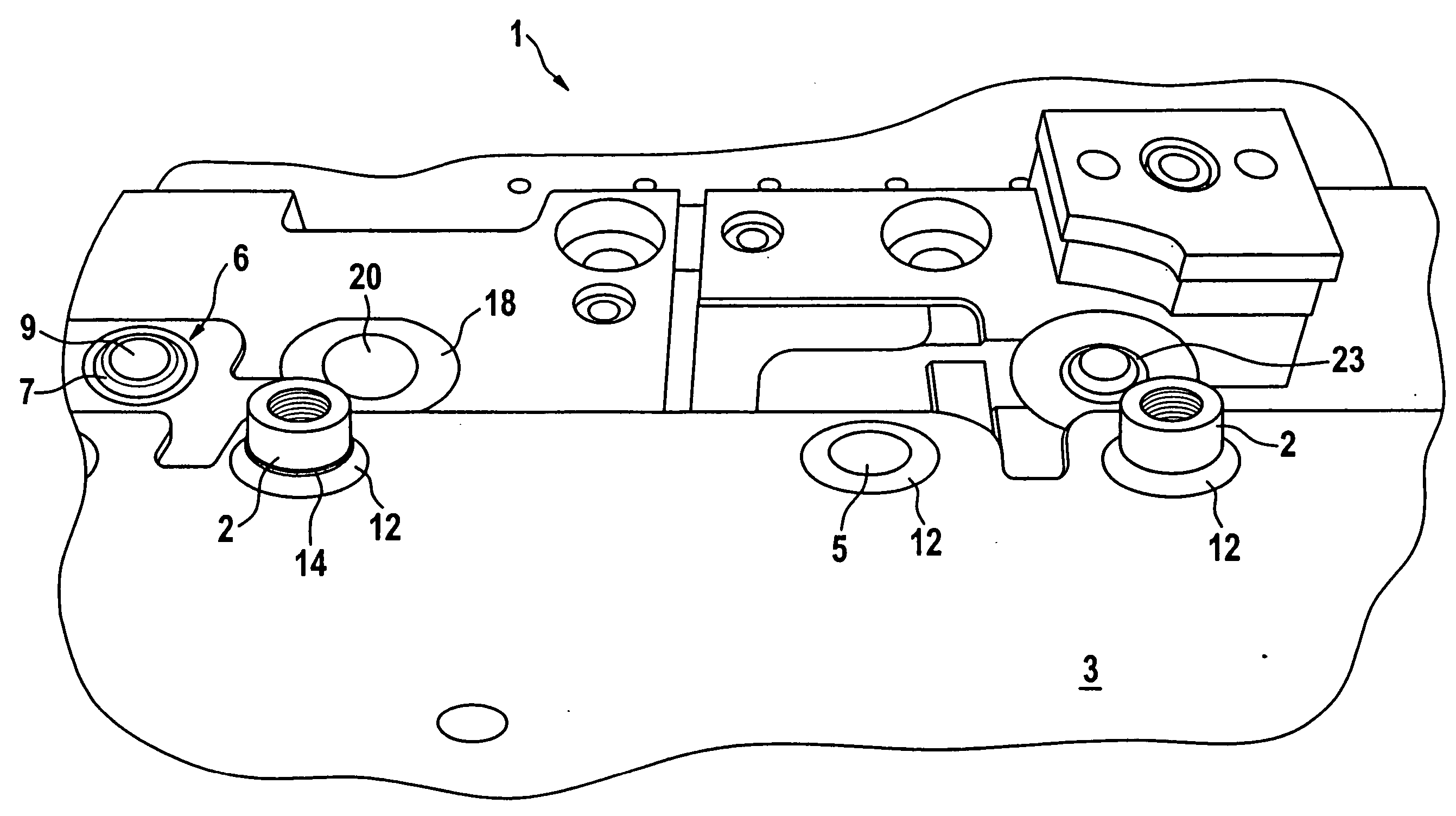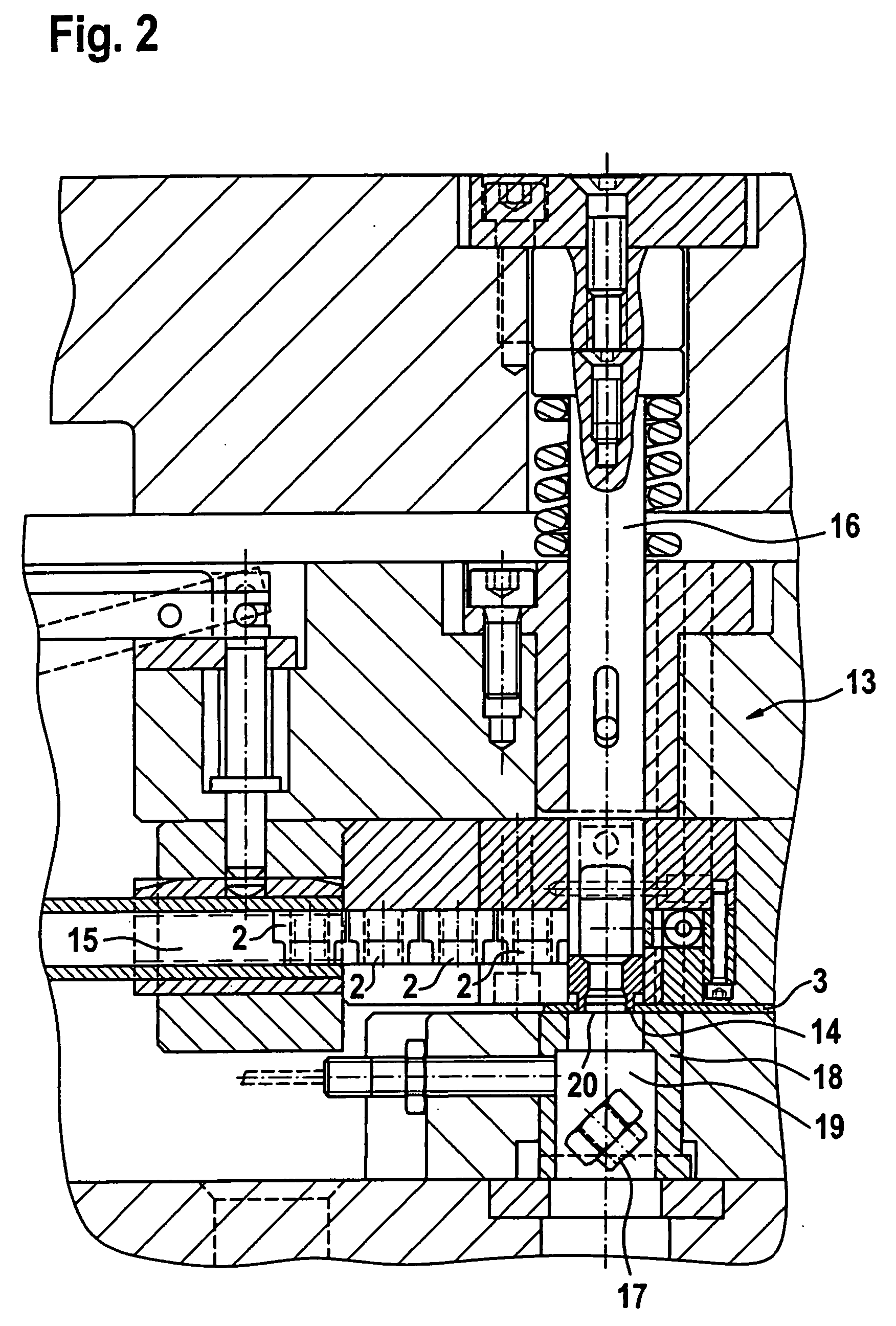Method and Device for Fastening a Rivet Nut on a Workpiece
- Summary
- Abstract
- Description
- Claims
- Application Information
AI Technical Summary
Benefits of technology
Problems solved by technology
Method used
Image
Examples
Embodiment Construction
[0018]FIG. 1 represents a device 1 for fastening a rivet nut 2 on a workpiece 3, the device 1 being designed as a composite follow-on and progressive-transfer tool. The device 1 comprises a punching tool 4, as can be seen from FIG. 3, which is used to punch a hole 5 into the workpiece 3. The device 1 further includes a stamping tool 6, which is represented in FIG. 1 only by way of its bottom die, this die comprising a raised annular shape 7. The stamping tool 6 is used to carry out the first operation in the method sequence, i.e. stamping a boss-like bead 8 on the workpiece 3, which is formed by a sheet metal panel. The workpiece 3 then remains in the station of the stamping tool 6, since the bead 8 is subjected to punching at the same location by means of the punching tool 4, which is arranged jointly and coaxially with the stamping tool 6 in a combination tool, thereby forming the hole 5. For this purpose, the annular shape 7 of the stamping tool 6 has an opening 9 which is enclos...
PUM
 Login to View More
Login to View More Abstract
Description
Claims
Application Information
 Login to View More
Login to View More - R&D
- Intellectual Property
- Life Sciences
- Materials
- Tech Scout
- Unparalleled Data Quality
- Higher Quality Content
- 60% Fewer Hallucinations
Browse by: Latest US Patents, China's latest patents, Technical Efficacy Thesaurus, Application Domain, Technology Topic, Popular Technical Reports.
© 2025 PatSnap. All rights reserved.Legal|Privacy policy|Modern Slavery Act Transparency Statement|Sitemap|About US| Contact US: help@patsnap.com



